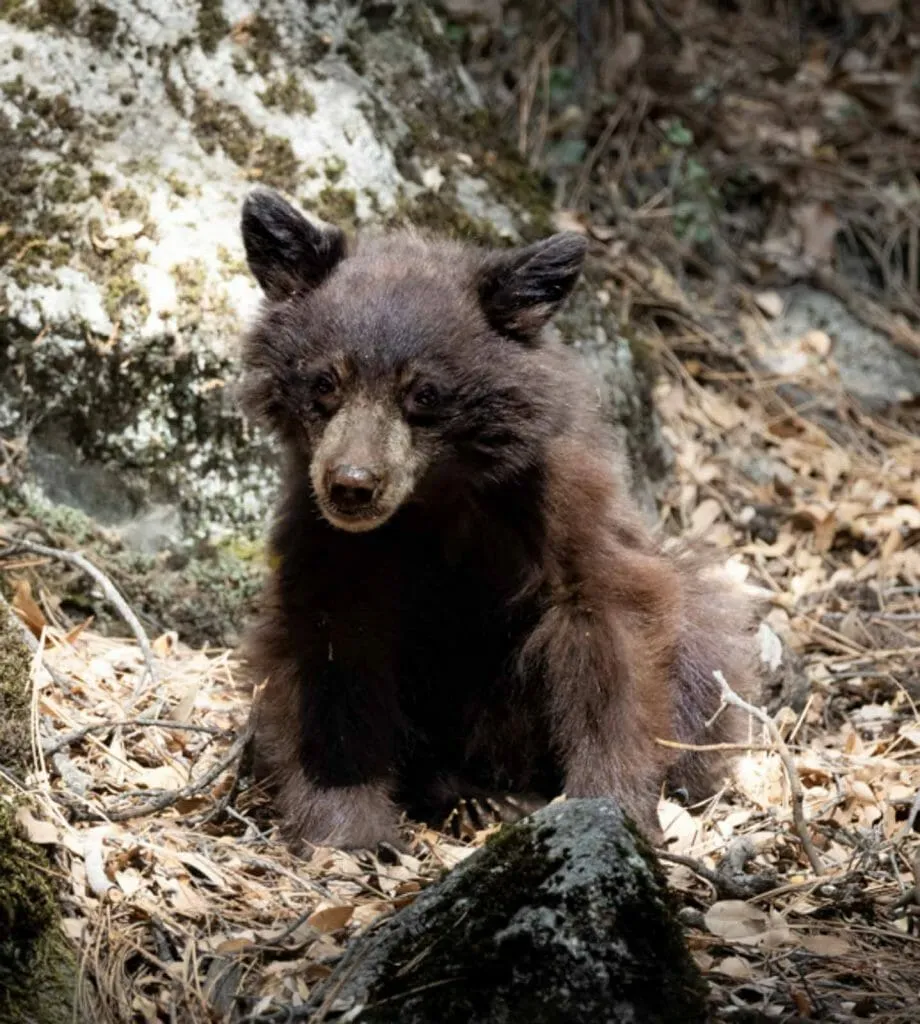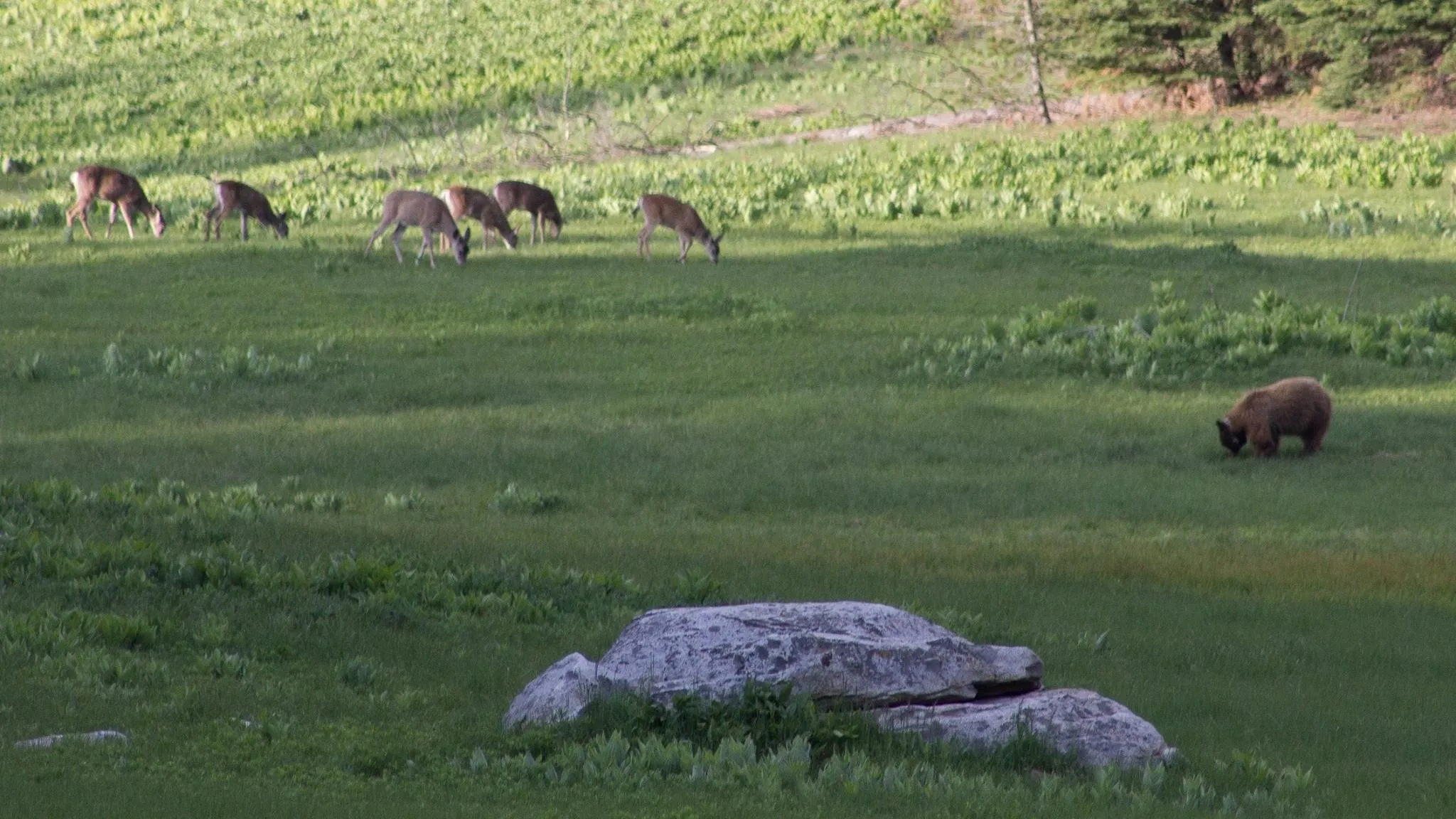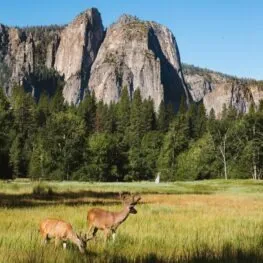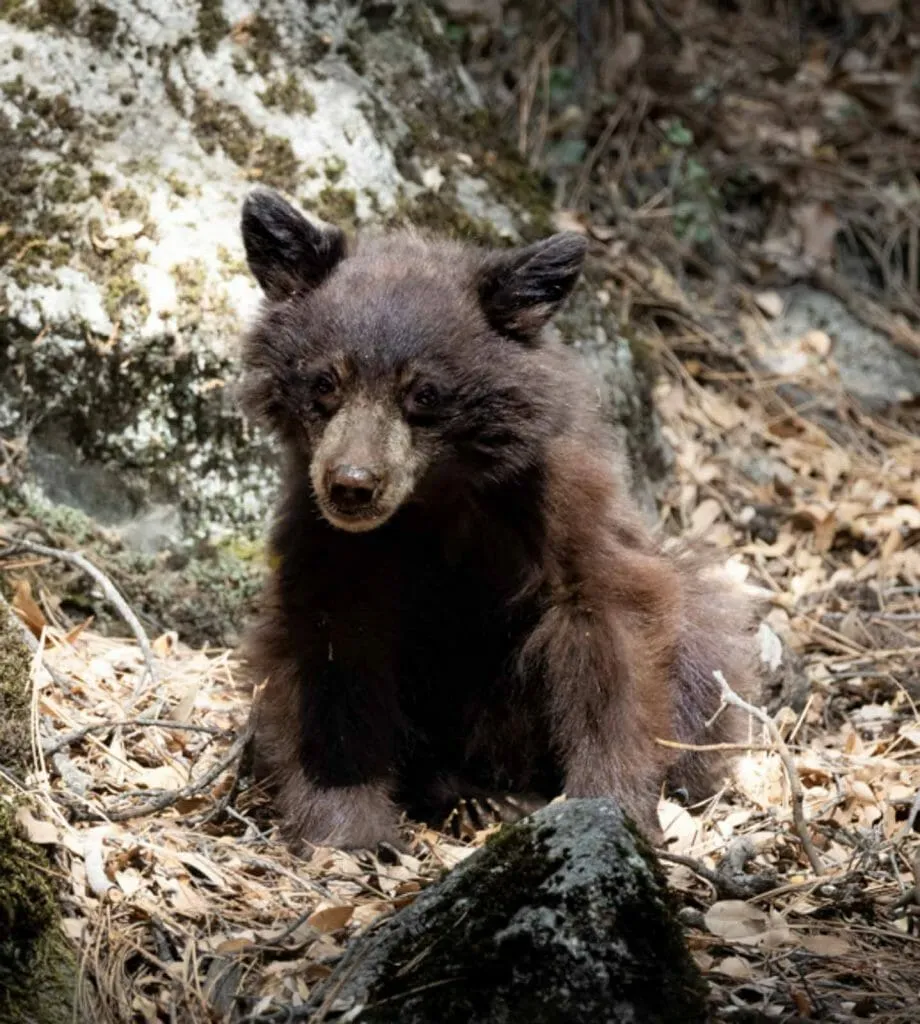
Yosemite National Park Wildlife: Your Complete Guide to Spotting Animals in America's Crown Jewel
Discover the incredible diversity of Yosemite National Park wildlife through this comprehensive guide. From majestic black bears to soaring peregrine falcons, I'll share my firsthand experiences and expert insights to help you safely observe and appreciate the 400+ animal species that call this iconic park home. Whether you're planning your first visit or you're a seasoned naturalist, this guide covers everything from the best viewing locations to essential safety gear for unforgettable wildlife adventures.
Overview of Yosemite National Park Wildlife
During my countless visits to Yosemite National Park, I've been consistently amazed by the incredible diversity of Yosemite National Park wildlife that thrives within its pristine boundaries. This magnificent park supports more than 400 species of vertebrates, creating one of the most biodiverse ecosystems in North America. From the valley floor to the high alpine regions, each elevation zone hosts unique communities of animals perfectly adapted to their environments.

The park's rich wildlife diversity stems from its vast range of habitats, spanning from 2,000 feet elevation in the foothills to over 13,000 feet in the high country. I've observed that the varied ecosystems - including oak woodlands, mixed conifer forests, subalpine meadows, and alpine terrain - each support distinct animal communities. This habitat diversity makes Yosemite National Park wildlife watching particularly rewarding, as you can encounter dramatically different species within a single day's journey.
What makes Yosemite truly special is how the park's long-protected status has allowed wildlife populations to thrive naturally. Unlike many other areas where human development has fragmented habitats, Yosemite's intact ecosystems support complete food webs and natural predator-prey relationships. During my early morning wildlife photography sessions, I've witnessed these complex interactions firsthand - from watching a coyote hunt ground squirrels to observing the delicate balance between grazing deer and their predators.
The park serves as critical habitat for several species of special concern, including the endangered Sierra Nevada bighorn sheep and the rarely seen Sierra Nevada red fox. Through my conversations with park rangers and wildlife biologists, I've learned that Yosemite's protected status makes it a crucial refuge for these sensitive species. The park's ongoing research and conservation programs ensure that future generations will continue to experience the wonder of encountering wild animals in their natural habitat, making every visit to observe Yosemite National Park wildlife both educational and inspiring.
Iconic Yosemite Animals You Must See
American Black Bears
Without question, black bears represent the most iconic Yosemite National Park wildlife species that visitors hope to encounter. During my decades of visiting the park, I've been fortunate to observe dozens of these magnificent creatures, and each sighting remains as thrilling as the first. Contrary to their name, approximately 90% of Yosemite's black bears display brown to blonde coloration, which initially confused me during my early park visits until a knowledgeable ranger explained this fascinating variation.
The park maintains an estimated population of 300-500 black bears, and I've learned through park seminars that these intelligent animals have adapted remarkably to the Sierra Nevada environment. Their seasonal behavior patterns fascinate me - emerging from winter dens in spring weighing significantly less than when they entered, then spending months foraging to build fat reserves for the next hibernation period. I've observed them feeding on everything from grasses and berries to insects and small mammals, demonstrating their remarkable adaptability.
Mule Deer

Mule deer rank among the most commonly observed Yosemite National Park wildlife species, and their distinctive large ears immediately identify them in the field. Through my countless encounters, I've developed a deep appreciation for their remarkable jumping ability - I've personally witnessed them clear 8-foot obstacles with seemingly effortless grace. Their name derives from those prominent ears, which provide exceptional hearing to detect approaching predators or curious photographers like myself.
Sierra Nevada Bighorn Sheep
Perhaps the most exciting wildlife encounter I've experienced involved spotting the endangered Sierra Nevada bighorn sheep during a high-country backpacking trip. These magnificent animals disappeared from Yosemite for over a century before successful reintroduction efforts brought them back. Today, small populations inhabit the steep, rocky terrain above 10,000 feet elevation, making sightings incredibly special. Their massive curved horns and sure-footed climbing ability on seemingly impossible cliff faces represent one of nature's most impressive adaptations.
Remarkable Bird Species
With 262 documented bird species, Yosemite offers extraordinary birdwatching opportunities throughout the year. I've been particularly captivated by peregrine falcons diving at incredible speeds near the granite cliffs, and the haunting calls of great gray owls during twilight hours. Steller's jays provide constant entertainment with their intelligence and bold personalities, often approaching my campsite hoping for food scraps. The park's designation as a Globally Important Bird Area reflects the critical habitat it provides for both resident and migratory species, making every visit a potential opportunity to add new species to your Yosemite National Park wildlife observation list.
Pro Tip: The best wildlife viewing equipment makes all the difference. I recommend investing in quality binoculars for distant observations and always carrying bear spray for safety.
Best Wildlife Viewing Locations in Yosemite
Yosemite Valley - The Wildlife Highway
In my experience, Yosemite Valley provides the most reliable and accessible Yosemite National Park wildlife viewing opportunities. The valley's mild climate and diverse habitats attract numerous species year-round, making it an ideal starting point for wildlife enthusiasts. I've consistently found success observing animals during early morning drives along Valley Loop Road, particularly in the meadow areas between dawn and 8 AM when many species are most active.
My favorite valley viewing spots include Swinging Bridge area for deer and occasional bears, Ahwahnee Meadow for diverse bird species, and the quiet areas near Mirror Lake where I've encountered everything from bobcats to mountain lions. The interface between meadows and forest edges creates ideal habitat conditions that concentrate wildlife activity. For those planning to explore more of the park, I highly recommend checking out the excellent hiking opportunities that provide access to additional wildlife viewing areas.
Tuolumne Meadows - High Country Wildlife
Tuolumne Meadows offers a completely different wildlife viewing experience compared to the valley floor. At 8,600 feet elevation, this subalpine environment hosts specialized species adapted to cooler temperatures and shorter growing seasons. During my summer visits, I've consistently observed yellow-bellied marmots sunning themselves on granite boulders, American pikas calling from rock piles, and various high-elevation bird species that rarely venture into the valley.
The meadows themselves attract deer for grazing, while the surrounding granite domes and talus slopes provide habitat for more elusive species. I've found that patient observation from strategic viewpoints often rewards visitors with sightings of Clark's nutcracker, gray-crowned rosy-finches, and occasionally, black bears foraging for whitebark pine nuts. The pristine nature of this high-country environment makes every Yosemite National Park wildlife encounter feel particularly special and untouched by human influence.

Glacier Point and High Country Access
Glacier Point Road provides access to some of Yosemite's most spectacular wildlife viewing opportunities, particularly for observing species that prefer mid-elevation environments. I've had remarkable success spotting great gray owls in the red fir forests along this route, and the overlooks often provide excellent vantage points for observing birds of prey riding thermal currents above the valley. The combination of accessibility and diverse habitat makes this area perfect for visitors who want to experience high-country wildlife without extensive hiking.
For visitors planning their trip logistics, understanding travel distances and planning helps optimize your wildlife viewing time. The park's seasonal road closures affect access to certain viewing areas, so advance planning ensures you can reach the best Yosemite National Park wildlife viewing locations during your visit.
Safety Reminder: Always maintain at least 50 yards distance from bears and mountain lions, and 25 yards from all other wildlife. Use the "thumb test" - if your outstretched thumb doesn't completely cover the animal, you're too close!
Seasonal Wildlife Watching Guide
Spring Wildlife Awakening (March-May)
Spring represents my favorite season for observing Yosemite National Park wildlife due to the dramatic awakening of activity after winter's dormancy. Black bears emerge from their dens in late March and April, often appearing thin and motivated to forage intensively. I've witnessed mother bears with new cubs during this period, creating some of the most heartwarming yet carefully observed wildlife encounters. The bears' focus on finding food makes them more visible but also more unpredictable, requiring extra caution.
Bird migration reaches its peak during late April and May, bringing species that winter in warmer climates back to their Yosemite breeding grounds. I've documented over 50 bird species during single morning outings in May, including returning warblers, flycatchers, and raptors. Wildflower blooms in the foothills and valley create ideal conditions for observing butterflies and the small mammals that feed on fresh vegetation. Mule deer fawning season begins in late spring, offering opportunities to observe these adorable youngsters learning survival skills from their mothers.
Summer Wildlife Abundance (June-August)
Summer provides the most reliable and diverse Yosemite National Park wildlife viewing opportunities, particularly as high-elevation areas become accessible after snowmelt. This season allows me to observe the full range of Yosemite's species, from valley floor inhabitants to alpine specialists. Bears focus on building fat reserves for winter, making them active throughout daylight hours as they forage for berries, nuts, and insects.
The high country comes alive during summer months, with marmots emerging from hibernation, pikas gathering vegetation for winter storage, and bighorn sheep moving to their summer ranges. I've found that early morning and late evening provide the best viewing conditions, as many animals seek shade during the hottest parts of summer days. Bird activity peaks during breeding season, with many species easier to observe as they defend territories and care for young. Water sources become critical gathering points for wildlife, making them excellent observation locations during dry summer periods.
Fall Wildlife Preparation (September-November)
Autumn wildlife watching offers unique opportunities to observe behavioral changes as animals prepare for winter. Bears enter hyperphagia, an intensive feeding period where they may consume up to 20,000 calories daily to build fat reserves. I've witnessed bears spending entire days in oak groves, climbing trees to access acorns and displaying remarkable athleticism for such large animals. Deer mating season creates dramatic displays as bucks compete for females, their bugling calls echoing through valleys during crisp autumn mornings.
Bird migration resumes as many species head to wintering grounds, creating excellent opportunities for observing species that pass through Yosemite but don't breed here. High-elevation animals begin their descent to lower elevations or enter preparation for hibernation. The cooler temperatures and changing colors create ideal conditions for wildlife photography, with animals often more tolerant of human presence as they focus on critical survival preparations. These behaviors make fall an exceptional time for experiencing the full drama of Yosemite National Park wildlife seasonal adaptations.
Winter Wildlife Resilience (December-February)
Winter wildlife watching requires more effort but rewards patient observers with unique insights into animal adaptations. While bears hibernate and many high-elevation species move to lower areas, winter reveals the remarkable resilience of year-round residents. I've tracked mountain lions, bobcats, and coyotes through snow, observing their hunting strategies and territorial behaviors. Mule deer concentrate in areas with less snow accumulation, creating opportunities for closer observation as their movement patterns become more predictable.
Winter bird feeding becomes critical, making bird feeders and natural food sources excellent observation points. I've photographed incredible diversity at my winter campsite feeders, from common species like Steller's jays to occasional rare visitors. The stark winter landscape creates dramatic photographic opportunities while highlighting the extraordinary adaptations that allow Yosemite National Park wildlife to thrive in challenging conditions. For visitors planning winter trips, checking current weather conditions helps ensure safe and successful wildlife viewing experiences.
Wildlife Safety and Essential Gear
Essential Wildlife Viewing Equipment
After years of observing Yosemite National Park wildlife, I've refined my gear selection to maximize both viewing opportunities and safety. Quality binoculars represent the most critical investment for wildlife enthusiasts, allowing safe observation distances while providing intimate views of animal behavior. I personally rely on 8x42 binoculars, which offer an excellent balance of magnification, field of view, and light-gathering capability for dawn and dusk observations when many animals are most active.
🔍 Recommended Wildlife Binoculars
Perfect for spotting Yosemite's incredible wildlife from safe distances
🛒 Shop Premium BinocularsPhotography equipment requires careful consideration of weight versus capability, especially for backcountry wildlife observation. A telephoto lens (minimum 300mm) enables capturing intimate wildlife portraits while maintaining safe distances. I've found that a sturdy tripod becomes essential for sharp images during low-light conditions when many animals are most active. Camera settings should be pre-configured for wildlife photography, with fast shutter speeds and appropriate ISO settings for various lighting conditions.
Wildlife Safety Protocols
Bear safety represents the most critical aspect of Yosemite National Park wildlife observation, requiring both preventive measures and emergency preparedness. I always carry EPA-approved bear spray when hiking in bear country, keeping it easily accessible on my belt or backpack strap. Proper food storage using bear canisters or lockers prevents dangerous wildlife encounters by removing food attractants that can lead to aggressive animal behavior.
🛡️ Essential Bear Safety Gear
Maximum strength protection for Yosemite wildlife encounters
🛒 Get Bear Spray ProtectionUnderstanding animal behavior cues helps prevent dangerous situations before they develop. I've learned to recognize signs of stress or agitation in wildlife, such as ear positions in deer, vocalizations from bears, or defensive postures in any species. Maintaining minimum distance requirements (50 yards for bears and mountain lions, 25 yards for other wildlife) isn't just park regulation - it's essential for both human safety and animal welfare. Sudden movements or loud noises can trigger flight responses that may result in animal injuries or defensive behaviors.
Educational Resources and Field Guides

Comprehensive field guides enhance wildlife viewing experiences by providing identification assistance, behavioral information, and ecological context. I recommend carrying California-specific wildlife guides that include detailed information about Yosemite National Park wildlife species, their habitats, and seasonal patterns. These resources help distinguish between similar species and provide insights into animal behaviors that improve observation success.
📚 Complete Wildlife Field Guide
Comprehensive identification guide for all California wildlife species
🛒 Shop Field GuidesTechnology can enhance wildlife observation when used appropriately, including wildlife tracking apps, photography equipment, and safety communication devices. However, I emphasize that technology should supplement rather than replace fundamental wildlife observation skills and safety practices. Apps that help identify bird calls or track animal sightings can be valuable, but they shouldn't distract from maintaining awareness of your surroundings and wildlife behavior. For visitors staying overnight, researching quality accommodation options near the park ensures you can start wildlife viewing activities early when animals are most active.
📷 Professional Wildlife Photography Lens
Capture stunning wildlife photos while maintaining safe distances
🛒 Shop Camera LensesEmergency preparedness includes carrying first aid supplies, emergency communication devices, and knowing park emergency procedures. I always inform someone of my wildlife viewing plans and expected return times, especially when venturing into remote areas. Understanding how to respond to various wildlife encounters - from maintaining calm during bear sightings to providing aid for animal attacks - can mean the difference between a memorable experience and a dangerous situation. Regular practice with bear spray and knowledge of proper deployment techniques ensure you're prepared if deterrent use becomes necessary during Yosemite National Park wildlife encounters.
Conclusion
My decades of exploring Yosemite National Park wildlife have taught me that every visit offers new discoveries and profound connections with nature. The park's incredible diversity of over 400 vertebrate species creates endless opportunities for observation, photography, and education, from the valley floor's accessible viewing areas to the challenging high-country environments where rare species thrive. Whether you're hoping to spot your first black bear, photograph soaring peregrine falcons, or witness the remarkable return of Sierra Nevada bighorn sheep, Yosemite provides experiences that will stay with you for a lifetime.
Success in wildlife viewing comes from combining preparation, patience, and respect for the animals and their habitat. The seasonal timing of your visit, quality of your equipment, understanding of animal behavior, and commitment to safety protocols all contribute to memorable and responsible wildlife encounters. I encourage every visitor to take time to truly observe and appreciate the complex ecosystems that support this remarkable Yosemite National Park wildlife community, understanding that we are privileged guests in their ancient home.
Remember that wildlife conservation depends on each visitor's commitment to following park regulations, maintaining appropriate distances, and leaving no trace of their presence. By sharing our experiences and knowledge responsibly, we help ensure that future generations will continue to marvel at Yosemite's wildlife abundance. The magic of encountering wild animals in their natural habitat reminds us of our connection to the natural world and our responsibility to protect these irreplaceable ecosystems.
As you plan your own wildlife viewing adventures, remember that every responsible encounter contributes to conservation efforts and helps maintain the delicate balance that allows both humans and animals to coexist in this spectacular landscape. I encourage you to visit our wildlife guide regularly for updated information, seasonal tips, and new insights that will enhance your Yosemite National Park wildlife viewing experiences. The wilderness is calling, and Yosemite's incredible animals are waiting to share their stories with those who approach with respect, patience, and wonder.
🌲 Start Your Wildlife Adventure Today! 🐻
Ready to experience the magic of Yosemite's incredible wildlife? Equip yourself with the right gear and knowledge for safe, memorable encounters.

